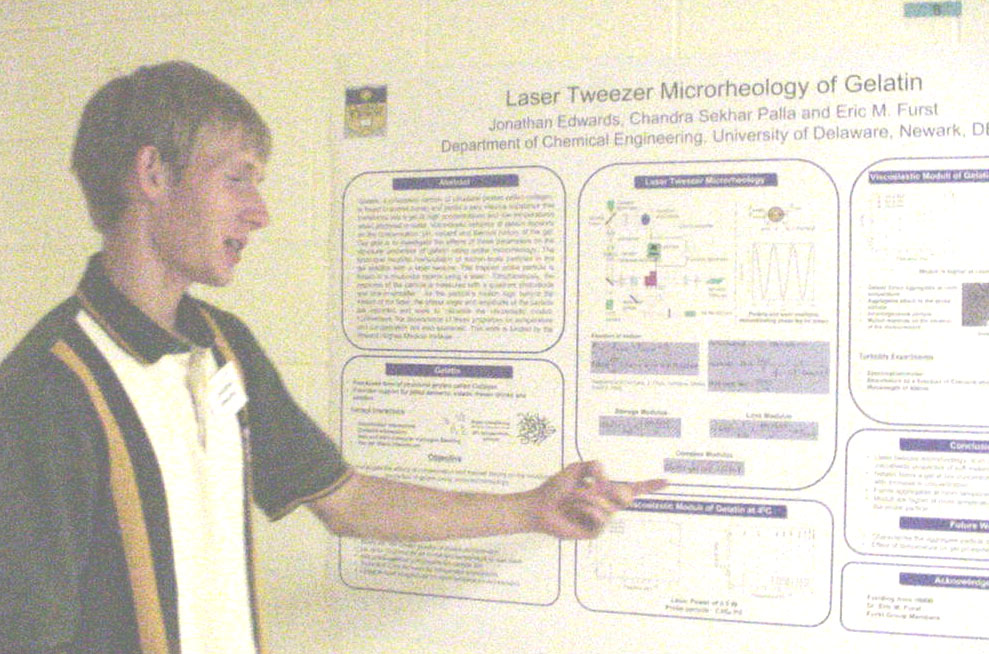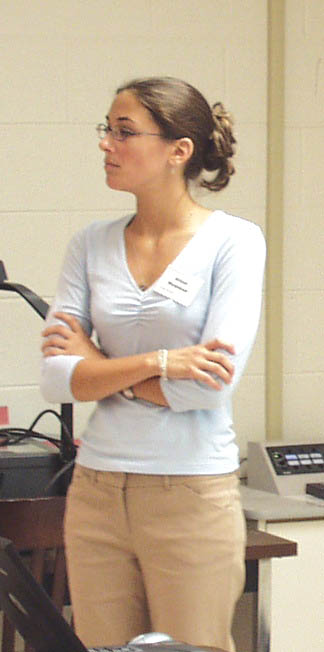Undergraduate Summer Research Symposium August 11, 2004
Ordered alphabetically by student's last name
|
Cloning and Expression
of NK1R in Escherichia coli and Mammalian Cells
Amanda Barker3, Jason M. Winget1, and Clifford R. Robinson1, 2, 3 1Department of Chemistry and Biochemistry, 2Delaware Biotechnology Institute, 3Department of Chemical Engineering G-protein coupled receptors (GPCRs) are a family of cell surface receptors, and are integral membrane proteins that contain seven transmembrane helices. Because ligand interactions with GPCRs mediate signaling events throughout the body, determination of the three-dimensional structure of GPCR ligand recognition sites would result in more effective drug design. Neurokinin receptors are a subfamily of GPCRs that are involved in pain mediation throughout the body. Previous research has shown that ligand recognition sites for the Neurokinin receptors are clustered in the extracellular loops. Due to the overall hydrophobicity of GPCRs, expression and biophysical characterization is very difficult. However, bacteriorhodopsin, a 7-helix transmembrane protein, is readily expressed and purified. The intent of my senior thesis is to graft the extracellular loops of the Neurokinin-1 receptor (NK1R) onto the helices of bacteriorhodopsin and perform ligand binding and crystallization studies on the mutants to determine the structure of its ligand recognition site. The goal is to create a protein that is easy to produce, but that retains the ligand-binding site of NK1R. This summer, I focused on cloning the NK1R into vectors for expression in E. coli and mammalian cells. The cloning was accomplished through several polymerase chain reactions, and by site directed mutagenesis. Once cloning is complete, the extracellular loops of the NK1R will be grafted onto the helices of BR, the native and mutant proteins will be expressed and ligand-binding assays will be developed. This project was funded in part by the Howard Hughes Medical Institute Undergraduate Science Education program. |


